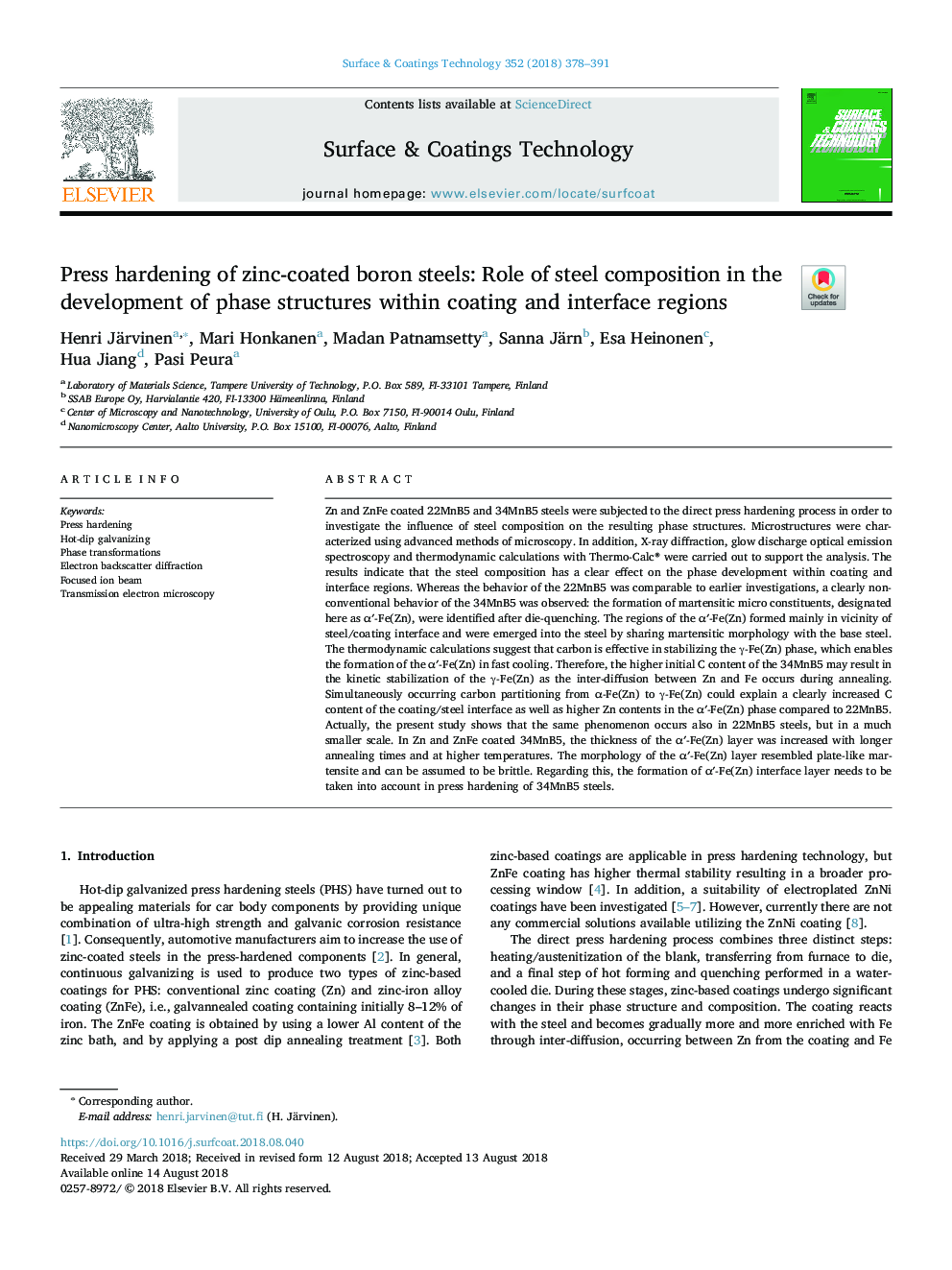| Article ID | Journal | Published Year | Pages | File Type |
|---|---|---|---|---|
| 8023218 | Surface and Coatings Technology | 2018 | 14 Pages |
Abstract
Zn and ZnFe coated 22MnB5 and 34MnB5 steels were subjected to the direct press hardening process in order to investigate the influence of steel composition on the resulting phase structures. Microstructures were characterized using advanced methods of microscopy. In addition, X-ray diffraction, glow discharge optical emission spectroscopy and thermodynamic calculations with Thermo-Calc® were carried out to support the analysis. The results indicate that the steel composition has a clear effect on the phase development within coating and interface regions. Whereas the behavior of the 22MnB5 was comparable to earlier investigations, a clearly non-conventional behavior of the 34MnB5 was observed: the formation of martensitic micro constituents, designated here as αâ²-Fe(Zn), were identified after die-quenching. The regions of the αâ²-Fe(Zn) formed mainly in vicinity of steel/coating interface and were emerged into the steel by sharing martensitic morphology with the base steel. The thermodynamic calculations suggest that carbon is effective in stabilizing the γ-Fe(Zn) phase, which enables the formation of the αâ²-Fe(Zn) in fast cooling. Therefore, the higher initial C content of the 34MnB5 may result in the kinetic stabilization of the γ-Fe(Zn) as the inter-diffusion between Zn and Fe occurs during annealing. Simultaneously occurring carbon partitioning from α-Fe(Zn) to γ-Fe(Zn) could explain a clearly increased C content of the coating/steel interface as well as higher Zn contents in the αâ²-Fe(Zn) phase compared to 22MnB5. Actually, the present study shows that the same phenomenon occurs also in 22MnB5 steels, but in a much smaller scale. In Zn and ZnFe coated 34MnB5, the thickness of the αâ²-Fe(Zn) layer was increased with longer annealing times and at higher temperatures. The morphology of the αâ²-Fe(Zn) layer resembled plate-like martensite and can be assumed to be brittle. Regarding this, the formation of αâ²-Fe(Zn) interface layer needs to be taken into account in press hardening of 34MnB5 steels.
Keywords
Related Topics
Physical Sciences and Engineering
Materials Science
Nanotechnology
Authors
Henri Järvinen, Mari Honkanen, Madan Patnamsetty, Sanna Järn, Esa Heinonen, Hua Jiang, Pasi Peura,
